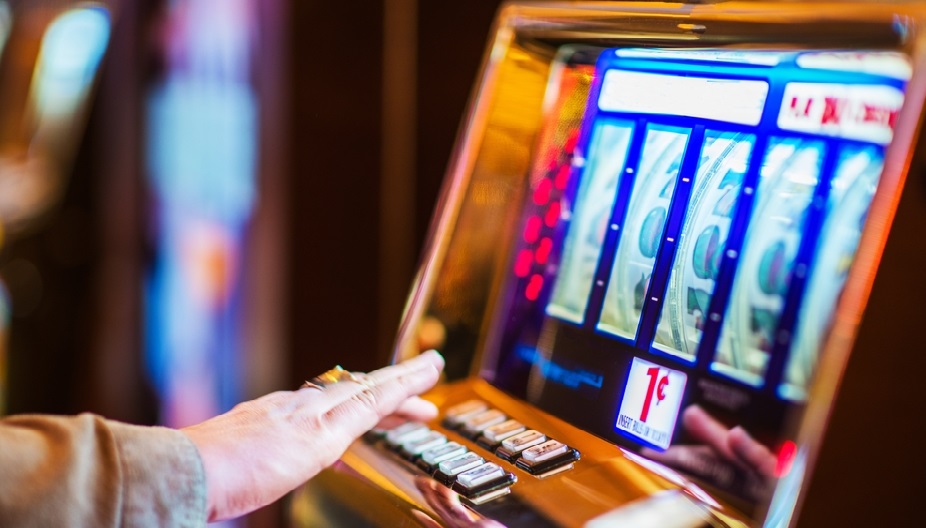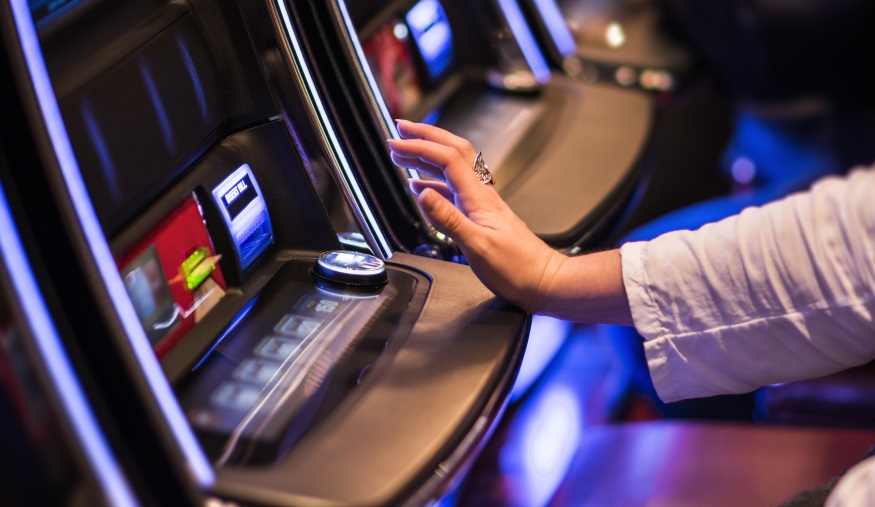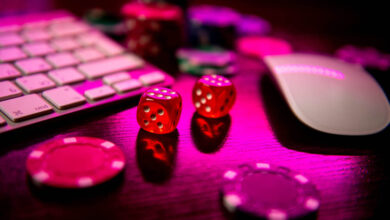Video Poker Strategy: Tips and Tricks to Help You Win Big

Video poker started to become a viable concept in the mid-1970s after it became economical to combine a television monitor with a central processing unit.
This was considered an innovative move, but the impracticality of the first models prevented it from taking off straight away.
When SIRCOMA introduced Draw Poker in 1979, this casino game finally began to gain popularity.
This was a movement that continued to increase in popularity throughout the 1980s, with more players seeing the benefits of video poker.
The main benefit was that it was less intimidating than playing table poker, allowing beginners to get their fix without feeling pressured.
As a result, video poker has found itself ingrained in many modern casinos, especially on the Las Vegas Strip.
Despite the increasing popularity over the last several years, some people still think video poker is comparable to slot machines.
While there are some similarities, there is one significant difference: video poker relies more on skill than it does on luck.
As with ordinary poker, when there is an element of skill involved in an addition to luck, you’re going to have a higher chance of winning if you understand the game.
Unfortunately, most people don’t know how to play video poker properly, even though it has become one of the most popular casino games to date.
The potential winnings are extremely high for those able to understand the game. So you won’t want to miss the opportunity to learn.
If you understand the basics of in-person poker, this guide is perfect because it will explain how these rules transpire in the video world.
We will take you through the differences between in-person and video poker, and the specific strategies you can use to increase your chances of success.
Why Video Poker Is So Popular
As mentioned, video poker has continued to increase in popularity since it established itself almost four decades ago.
Even with new technologies and advancements in the gambling industry, people find themselves returning to video poker time and time again.
Some of the most popular elements were implemented within the games from the beginning.
It Has Very High Odds

One of the main reasons video poker is so popular is because it offers some of the highest odds within the casino gambling world.
On average, casinos earn a profit of just 3% each time someone plays a video poker game.
This is known as the house edge and it is considerably smaller than is the case for other casino games.
Although each video poker machine differs from others, you will usually find that you are able to achieve a 97% return on your initial investment, dependent upon your skill.
Skills Directly Influence The Outcome

Ordinary casino games rely heavily on luck for success, which can diminish feelings of achievement and leave one feeling lost as to why they won.
With video poker, however, luck is much less important; players are required to build their skills in order to influence the outcome.
This is preferred among players because it makes them feel like they’re advancing, and provides a higher overall sense of achievement.
Especially when someone begins to consistently win poker games, the hard work is likely to feel far more important than it would if the same win was made on a slot machine.
In addition to this, it also provides players with a reason behind their wins and losses, giving a player constant goals to work on going forward.
It’s Less Pressure Than Real Poker Games

If you’ve ever played an in-person poker game, or taken part in an online poker tournament, you’ll understand that there is great pressure to contend with.
Even if you’re playing with friends or acquaintances, the fear of failing can be overwhelming when your are just beginning your journey with poker.
Video poker, however, removes this pressure, partly because you can play completely anonymously against a computerized machine.
This allows you to improve your skills without worrying about the comments or pressure you’ll receive from other players.
Not only does this help players more quickly build their confidence, but it also gives them less to focus on, making them improve their skills faster, too.
You Have More Control With Video Poker Than Slot Machines

Some people who play video poker regularly may not have made their decision based on whether or not they’ve played traditional poker.
Having seen these machines alongside slot machines, they may instead choose video poker because it provides more control over the results.
With slot machines, you don’t get to control the results.
You might be able to hold one of the rolls for one round, but if you don’t win on the next one, all your success goes down the drain.
With video poker, however, you are in complete control over whether you keep the first five cards you’re dealt, discard them all, or something in between.
Essentially, you make more decisions and can, therefore, better understand wins and losses that occur.
The Rules Of Video Poker

As with in-person poker, there are different versions of video poker games, but they all follow similar rules.
Video poker is quite similar to in-person poker in that almost every game is based on a five-card draw and uses a standard 52 card deck.
The only time this isn’t the case is with the game Joker’s Wild, which follows the five-card draw rules but contains 53 cards.
With video poker, the first thing you need to do is make your wager. Normally, machines allow you to bet up to five coins, with your potential winnings increasing with the more you bet.
After this, you press the deal button, at which point the machine will randomly provide you with five cards for your initial hand.
Once you’ve seen your cards, you need to use your skill to decide which ones you’re going to keep and which ones you’re going to throw away or discard.
There is a video poker strategy specifically for deciding whether to keep or discard your cards, which we will go into later in this article.
To keep your cards, most machines will require you to tap on the images of your chosen cards on the screen.
After finalizing which cards you’re going to keep and those you’re going to dispose of, simply click the draw button and the machine will randomly replace the discarded cards.
To win your bet, you need to end up with a good poker hand, such as a royal or normal flush, a straight, or two pairs.
Why A Video Poker Strategy Is So Important

The most significant reason why a poker strategy is important is that it’s a game of skill, not luck.
This means that players have a say in the game they’re playing, and the strategy people use can make a big difference in their ability to do so.
Unfortunately, far too many people still treat video poker as a guessing game based on luck, which is extremely bad form and can cause extreme losses.
Unlike other games, video poker isn’t something that you’ll pick up if you spend enough time guessing, so knowing a strategy will really kick start your gambling efforts.
In addition to this, having a strategy will enable you to understand why you’re making the decisions you are.
This is extremely important when you’re headed towards a win because it allows you to recreate the same moves in similar situations in the future.
Basically, a video poker strategy is important because it allows you to make decisions that lead to more significant wins and to advance your skills as you go along.
Eventually, this will open you up to other benefits, including being able to play in competitions that are set aside for the casino’s best players.
What To Remember When Implementing A Strategy
One of the most important points to remember when implementing a strategy is that different things are going to work for different skill levels.
There’s no point in jumping ahead and trying to decipher a strategy meant for an established poker player if you’ve got no experience with it yourself.
Even if you do think you understand a strategy, it might be worth trying out a free game of video poker before risking real money.
The good news is that many online casino websites offer video poker games where you can try out your strategies without spending any real money.
Once you’ve spent time practicing, then it’s time to go and implement your strategy.
It’s perfectly normal to make mistakes with the first few attempts you make, but the more you preserve, the sooner these will be eradicated.
How To Develop A Video Poker Strategy
The most important point to remember about developing a video poker strategy is that it relies on mathematical principles.
Once you understand the rules regarding poker, which are pretty standard regardless of which type you’re playing, you will be able to calculate your chances of winning ahead of time.
If you are creating your own strategy, the optimal one would be designed to win as much as possible from the initial hand that’s been dealt.
As a result, you will receive several hands, increasing your opportunities to chase the coveted jackpot-sized hands.
Remember that your poker strategies should be in line with the skills that you have.
As mentioned, pushing yourself too far too quickly can be extremely detrimental and may lead to considerable monetary losses.
If the idea of coming up with your own strategy sounds daunting, there are already a number of readymade options for you to choose from to suit your skill level.
Basic Video Poker Strategy

The most basic of poker strategies involves learning potential outcomes and how they dictate whether you hold or discard the first five cards you are dealt.
You should hold your cards if you receive one of the following results:
- A Royal Flush
- Straight Flush
- Four-Of-A-Kind
- Full House
- Three-Of-A-Kind
- Two Pair
There are also individual rules you should remember about each of the above results, because there are various factors that can affect your predicted outcome.
If you have three-of-a-kind, for example, you should discard the remaining two cards for a chance at achieving four-of-a-kind. This also leaves open opportunities to receive a full house.
If you have two pair, which is two pairs of cards with the same value, you should discard the fifth card to be in with a chance of winning a full house.
When it comes to a flush or straight flush, there is only one time when you should consider breaking them.
This is when you have four cards towards a royal flush, such as king-queen-jack-9. If this occurs, you should discard the 9 to be in with a chance at receiving a big payoff for the 10 of clubs.
If you receive a pair of jacks or better, you should consider breaking them if you have four cards towards a royal flush or four cards towards a lower straight flush.
Although it might be tempting to stick with a single high card as opposed to a pair of two lower numbered cards, the best strategy is to actually do the opposite.
By discarding the single higher card, you are increasing your chances of receiving a four-of-a-kind result.
If you have a four-of-a-kind where the missing card to complete the royal flush is in the middle, do not draw it unless it includes at least three high cards.
Instead, focus on the open straights, where there is space available at one end to complete the cards needed for the jackpot, giving you more opportunities to win.
Other Video Poker Strategies
The basic poker strategy is something that should be used by all players, regardless of their skill level.
Once you’ve become used to that, however, video poker may become boring if you cannot make the game more complex for bigger wins going forward.
That’s why we are going to briefly introduce you to a number of other strategies you can use to increase the value of your wager once implemented.
Find The Best Pay Table
One of the main reasons video poker has continued gaining popularity over the years is because of the high odds it continues to provide to its players.
As mentioned, casinos receive a profit of just 3 percent on each play of a video poker game on average.
This is known as the house edge, and it’s considerably smaller in video poker than it is for other casino games.
You should then, in theory, be able to retrieve 97 percent of your initial wager, but this isn’t always the case.
The reality is that the return percentage is created by individual companies, and can generally range anywhere between 95-99%.
This might seem like too small a difference to pay attention to, but even four percent can make a significant difference to your winnings.
The good news is that taking the time to find the best pay table isn’t difficult because all video poker machines allow you to learn the expected return before you start playing.
By taking the time to check this, you can choose a return that goes in your favor to maximize your winnings and limit the losses you earn.
Bet The Maximum Coin Bet

If you already are playing or are planning to play video poker, it’s almost inevitable that you are doing so because you want to win as much money as you can.
The best way to do this is by placing the maximum coin bet.
Usually, this stands at five coins and gives you the best chances of getting the full percentage of your win if you receive a royal flush, otherwise known as the jackpot.
If you’re inexperienced or are worried about placing a full bet, smaller ones aren’t completely useless.
In fact, many machines will offer a percentage of the potential win if you land on a royal flush with fewer coins.
The only difference is that this win will not equal the same amount of money as if you had bet the full amount of coins.
Go Slowly – There’s No Rush
One of the biggest differences between video poker and in-person poker is that you have a lot more time.
If you take longer than what is considered necessary to make a decision about the cards you’re going to keep or discard, nobody’s going to call the clock.
You aren’t timed at all in video poker, giving you all the time to slow down and make calculated decisions instead of ones based on panic.
This can be used to reduce your overall losses, because you will be making well considered decisions rather than hasty reactions.
Reducing your hourly losses gives you the opportunity to play longer.
As a result, you’re likely to increase your chances of hitting a royal flush or at least winning a significant amount of money.
Keep An Eye On Bonuses
If you’ve interacted with any part of the gambling industry in the past, you know there are regular promotions and offers for new and returning customers.
This is also the case with video gambling and is something you should take full advantage of.
Many of these promotions and bonuses involve giving away extra ‘free’ plays, which is great for those who are just beginning to get interested in video poker.
By using these offers, you will be able to learn the ropes of a real video poker game in a casino without wasting significant amounts of money while doing so.
If there aren’t any video poker bonuses available, getting in touch with a company directly or through an associated website might be a great way to get one.
After all, if you don’t try, you don’t get, and the more help you can get at the outset the better.
Practice Strategies Regularly
Although not strictly a strategy within itself, practicing what you’ve learned in this article regularly is crucial to succeeding in the world of video poker.
By practicing regularly, you will hone your skills and it won’t take long for the strategies to become second nature to you.
This will also help you learn what works, and apply the things you’ve read into a real-life situation when it happens.
As a result, you will be able to make quicker decisions without being reckless, while also reaping significant rewards and avoiding stupid mistakes.
Summary
With video poker’s attractive odds, it’s not difficult to see why it continues to rise in popularity despite being released four decades ago.
In addition to the odds, many people are turning towards video poker as an alternative to traditional poker due to the skill level involved.
Not only will this stimulate your brain, but it will also give you a higher sense of achievement when you do win as opposed to those who win on luck-based slot machines.
Although the idea of using specific strategies may seem overwhelming at first, a little bit of explaining shows that learning or employing them is not that difficult.
Once you know the basic strategy that dictates the moves you make based on the cards you receive, you are free to start playing video poker in a real casino.
With many games to choose from and less pressure than in-person poker, video poker is perfect for anyone just beginning to learn the ropes.
Over time, you can build on these strategies to make your game more complex to increase your chances of achieving bigger wins.
Ultimately, as long as you have the fundamentals of video poker down pat, then you are ready to get started and practice towards playing your first game.







